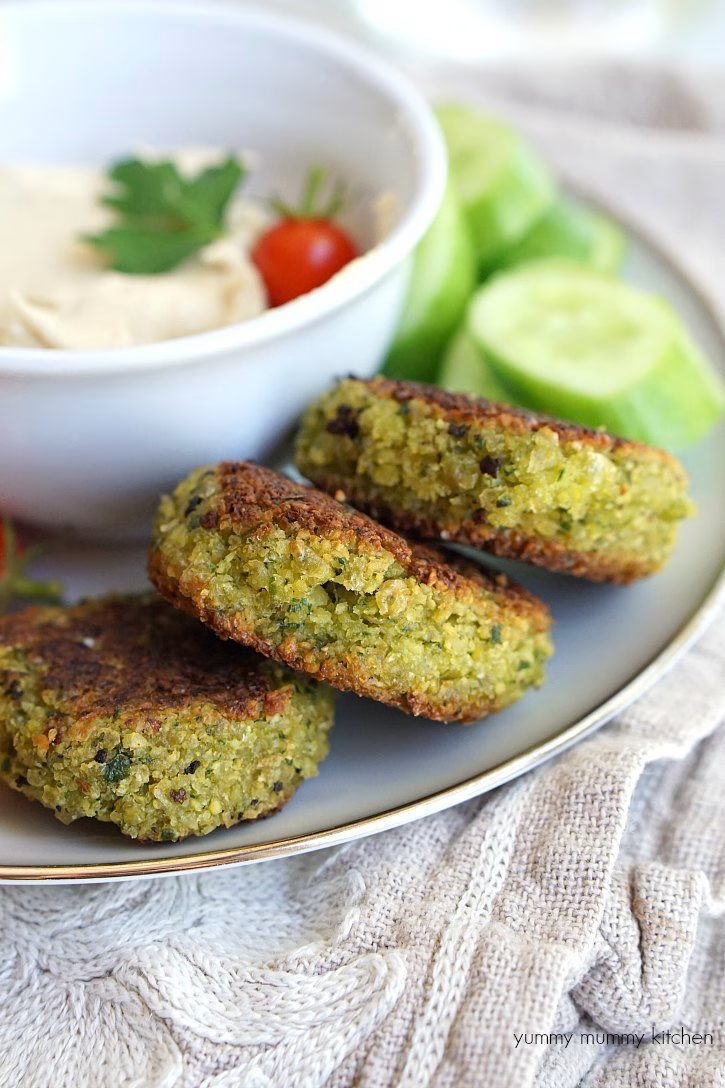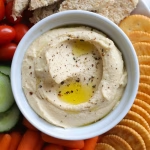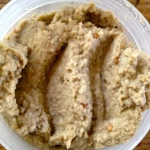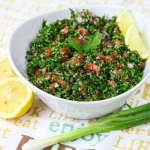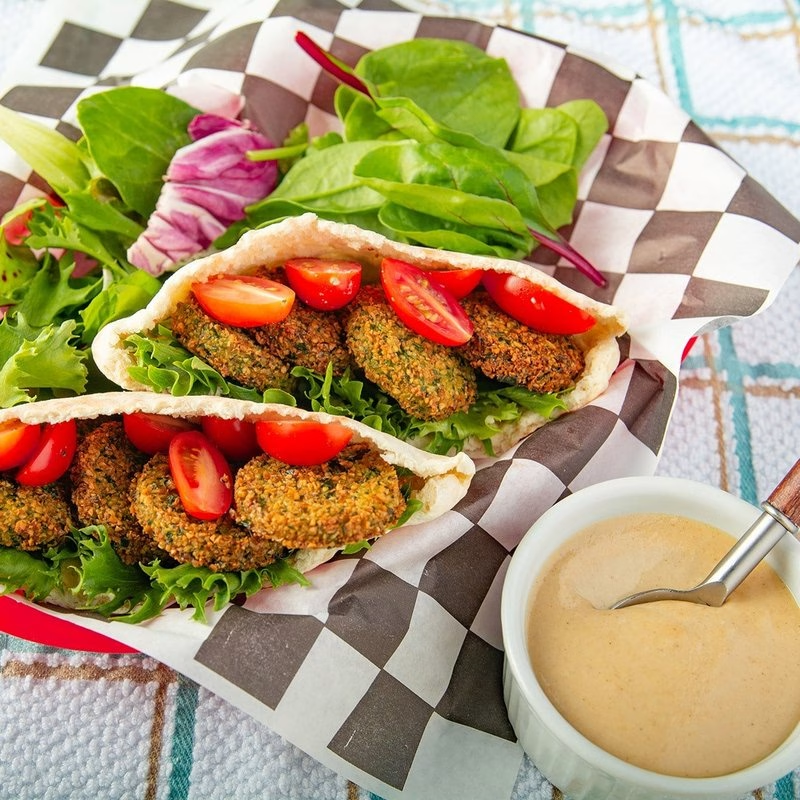
Introduction
Falafel, a crunchy and flavorful delight, has captured the hearts and stomachs of food lovers around the globe. Originating from the Middle East, this popular street food has become a staple in various cuisines, offering a unique blend of spices and textures that make it irresistible. Traditionally made with chickpeas or fava beans, falafel is often served in pita bread with fresh vegetables and tahini sauce. In this article, you’ll learn how to make falafel at home, explore different variations, and discover tips for achieving the perfect texture and flavor. Get ready to dive into the world of falafel ingredients, homemade falafel recipes, and the secrets to creating the best falafel you’ll ever taste!
Ingredients
| Ingredient | Measurement | Description |
|---|---|---|
| Chickpeas | 1 cup (dried) | Dried chickpeas are essential for authentic falafel, providing a nutty flavor and earthy taste. |
| Fresh Parsley | 1 cup (packed) | This herb adds a fresh kick to your falafel, balancing the spices with its vibrant color and taste. |
| Fresh Cilantro | 1 cup (packed) | Adding cilantro introduces a slightly citrusy flavor, enhancing the overall aroma of your falafel. |
| Garlic Cloves | 3-4 cloves | Fresh garlic enhances the aroma and depth of flavor, making your falafel irresistible. |
| Onion | 1 medium | A chopped onion brings sweetness and texture, essential for that classic falafel taste. |
| Cumin Powder | 1 tsp | Cumin adds a warm, earthy flavor, making your falafel truly authentic. |
| Coriander Powder | 1 tsp | This spice offers a bright, slightly citrusy flavor that complements the chickpeas perfectly. |
| Baking Powder | 1 tsp | Helps the falafel puff up and achieve that delightful light texture. |
| Salt | 1 tsp | A pinch of salt enhances the flavors and brings everything together. |
| Pepper | 1/2 tsp | Adds a subtle heat, elevating the taste profile of your falafel. |
| Vegetable Oil | for frying | Essential for frying your falafel, creating that perfect crispy exterior. |
Step-by-Step Instructions
- Step 1: Prepare the Chickpeas – Soak the dried chickpeas in water overnight or for at least 8 hours. This step is crucial as it will soften the chickpeas and make them easier to blend. Remember, avoid canned chickpeas; they will not give you the best falafel texture.
- Step 2: Blend the Ingredients – In a food processor, combine soaked chickpeas, parsley, cilantro, garlic, onion, cumin, coriander, salt, and pepper. Pulse until you achieve a coarse, grainy texture. It’s important not to over-blend; you want some texture in your falafel mixture.
- Step 3: Add Baking Powder – Sprinkle in the baking powder and mix it using a spatula. This will help your falafel become light and fluffy when fried. Let the mixture sit for about 30 minutes in the fridge to firm up further.
- Step 4: Shape the Falafel – Once chilled, take small amounts of the mixture and roll them into small balls or patties. Each piece should be about the size of a golf ball. If the mixture feels too sticky, lightly wet your hands before shaping.
- Step 5: Fry the Falafel – Heat vegetable oil in a deep pan over medium-high heat. Carefully drop the falafel balls into the hot oil, frying them in batches until they are golden brown and crispy, usually about 4-5 minutes per batch. Make sure not to overcrowd the pan!
- Step 6: Drain and Serve – Once fried, remove the falafel and let them drain on paper towels to absorb excess oil. Serve them hot, ideally with tahini sauce, sliced tomatoes, cucumbers, and greens in pita bread for a delightful meal!
Pro Tips
- Tip 1: If you prefer baked falafel, you can brush them with a little oil and bake them at 375°F (190°C) for about 20-25 minutes, flipping halfway, to achieve a healthier version.
- Tip 2: Always taste the falafel mixture before frying. Adjust the seasoning as needed since the flavors can change once cooked.
- Tip 3: For extra crunch, add a tablespoon of flour (chickpea flour works great) to the mixture. This will help bind the ingredients together and enhance the texture.
- Tip 4: Experiment with additional spices like smoked paprika or chili powder for a flavor twist. You can also add finely chopped vegetables for added nutrition and variety.
- Tip 5: To store leftover falafel, keep them in an airtight container in the fridge for up to 3 days. You can also freeze them for later use, just make sure to fry them from frozen for the best results!
Nutritional Information
| Nutrient | Per Serving (1 Falafel) |
|---|---|
| Calories | 60 |
| Protein | 3g |
| Carbohydrates | 8g |
| Saturated Fats | 1g |
| Fiber | 2g |
| Cholesterol | 0mg |
| Sugars | 1g |
| Total Fat | 3g |
FAQs
What is the best way to store falafel?
To store falafel, place them in an airtight container in the refrigerator for up to 3 days. For longer storage, freeze them. Simply reheat in the oven or air fryer to regain crispiness.
Can falafel be made vegan or gluten-free?
Absolutely! Falafel is naturally vegan as it contains no animal products. For gluten-free options, ensure that any flour used is certified gluten-free.
What are the best side dishes to serve with falafel?
Falafel pairs wonderfully with tabbouleh, hummus, and baba ganoush, providing a complete meal bursting with Mediterranean flavors.
How long does it take to prepare falafel?
The preparation time for falafel is about 15 minutes, plus at least 8 hours for soaking the chickpeas. Frying takes around 10-15 minutes.
Can I freeze falafel for later?
Yes! You can freeze uncooked falafel or cooked ones. Just ensure they are completely cooled before freezing for best texture.
What sauces pair well with falafel?
Popular falafel sauces include tahini sauce, yogurt sauce, or spicy harissa. These add creaminess and complement the flavors perfectly.
Is falafel healthy?
Falafel is packed with plant-based protein and fiber, making it a healthy choice. Opt for baked rather than fried versions for fewer calories.
How do I make falafel spicy?
To add heat, incorporate cayenne pepper or diced jalapeños into the falafel mixture before frying. You can also serve with a spicy sauce for an extra kick.
